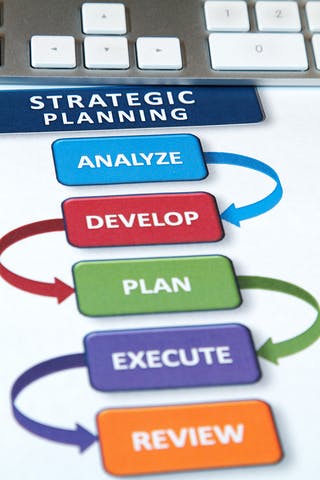When historians write about the great battles throughout human history, invariably one of the keys to victory is a military leader with a brilliant strategy for defeating the enemy forces. It seems that when it comes to winning battles, the leader who can execute the most cunning plan will almost always emerge victorious.
The power of a great plan translates far beyond the battlefield and is particularly relevant for HR teams. After all, human resources is in a battle — a battle for credibility; a battle for respect; a battle for influence. And a great plan may be the key to winning this battle.
For human resources, the power of planning may not be where you expect it to be.
Four keys to a well-designed plan
Instead of being solely the results produced from the execution of the plan, the real power lies in the planning process itself. To be most effective, the planning process for an HR team must be broadly inclusive of internal customers and stakeholders. A well-designed inclusive planning process can accomplish several things.
- Alignment. This is the commonly understood value of strategic planning. The plan articulates how the work HR does aligns to support the organization’s strategy and goals. The plan also ensures that the people and functions within human resources are aligned with each other towards achieving the same objectives.
- Buy-in. One of the struggles of HR teams is that many of our customers think they could do our jobs better than we do. They have a lot of opinions about HR, some good and some ill-informed. By executing a broad, inclusive process of strategic planning, you can solicit your customer’s opinions in the process so that they feel like you’ve heard their ideas and considered them in creating the plan. If they feel included, they are far more likely to be supportive.
- Education. Let’s face it, most of our customers don’t really understand what we do in HR. And, if we are honest, we’ve probably worked to keep it that way in order to preserve the value of our expertise. But to enhance our credibility organizationally, we need to invite the business into our work instead of keeping them out. An inclusive planning process that involves our customers will help them get better educated about what we do and how we do it. They will, without question, come away with a better appreciation for how hard our job is in HR.
- Control. We’re not talking about control over others, but rather a control of how HR should be evaluated and understood. One of the principles I live by is that we teach people how to treat us. Put another way, if you aren’t being treated the way you think you should be, it’s because you are allowing it to happen. When we don’t manage the organization’s expectations of human resources, we leave our destiny in other’s hands. We know they don’t really understand how we add value, so why would we allow them to determine how we should be evaluated? A well-designed strategic plan enhances your control of how others will interpret your results.
If you currently have a strategic planning process within HR, but you aren’t seeing these results, it’s likely because you aren’t making it inclusive enough of the business. Being inclusive takes time so it can be a tempting step to minimize or skip. Avoid this trap.
What the planning process must include
There are many correct ways to do strategic planning and you will have to choose which approach is best for your organization. Regardless of the specific approach you choose, to achieve the results outlined above, your process must include the following components.
- Extensive input from your internal customers on the current state of HR. This process can be painful because if done correctly, you will get some feedback that isn’t flattering or easy to hear. How you gather this information can range from surveys to focus groups to one-on-one discussion. Depending on your organization, you may need an external consultant to assist with this part of the process in order to get honest feedback.
- Feedback from your HR staff on the strengths and weaknesses of the team. Again, this process can be handled in a variety of ways. The critical element is to ensure that the HR staff has input and feels heard, particularly those who work on the front lines with employees every day.
- Strategic information from each business unit or department/division about their future plans, and the major challenges they anticipate for their business, both in general and regarding their talent. It’s important to spend time on in-person discussions in addition to gaining copies of written strategic plans. The conversations are another way to make them feel included in the process and to ensure that your plan reflects the critical needs of their business.
- Broad communication of the plan back to those who participated in the process and other key stakeholders. Depending on the audience, the amount of detail to share will vary, but it’s critical that once the plan is completed, you take the time to sell it back to the organization. In the communication, you must remind them of how the plan reflects their input and is designed to support their success.
This process is time consuming to complete and it can feel tedious at times — but it might also be the best time you ever invest in your HR team. When executed correctly, an inclusive strategic planning process can take your HR team from being perceived as a necessary evil to emerging as a strategic leader within the organization.
